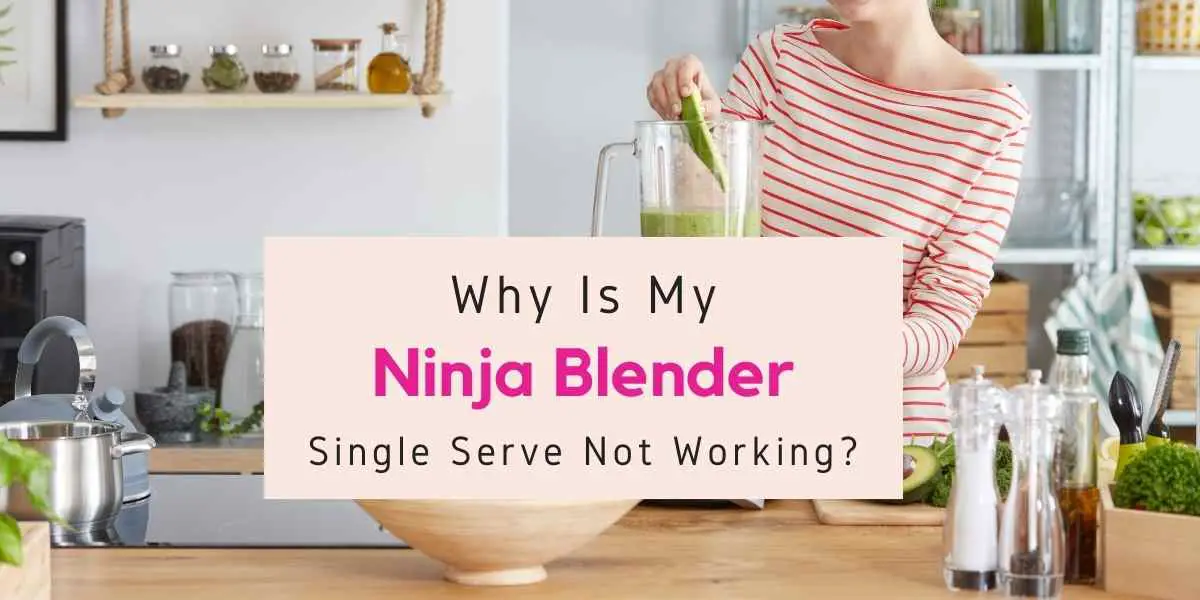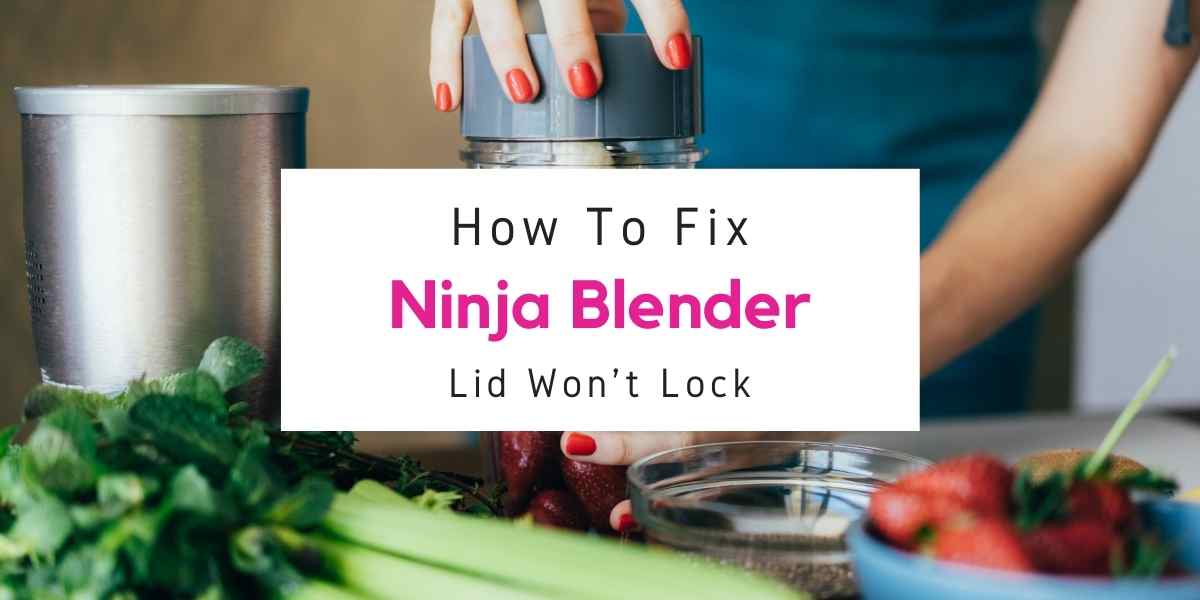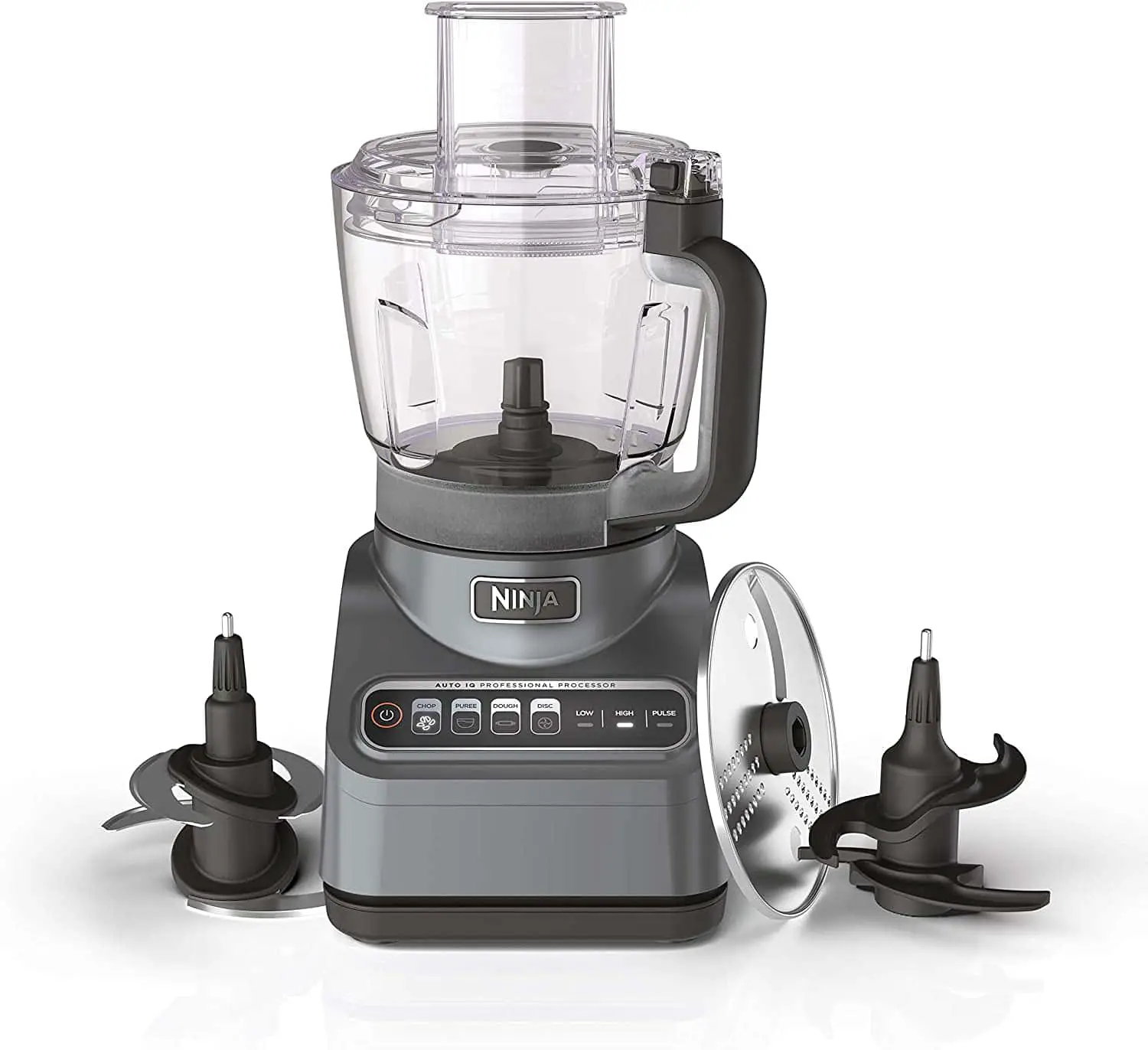The Ninja blender is a great way to make smoothies, juices, and other cold foods. But can it handle hot food? With the right accessories, you can definitely blend up some hot dishes in your Ninja blender! Let’s take a look at some of the best ways to do it.
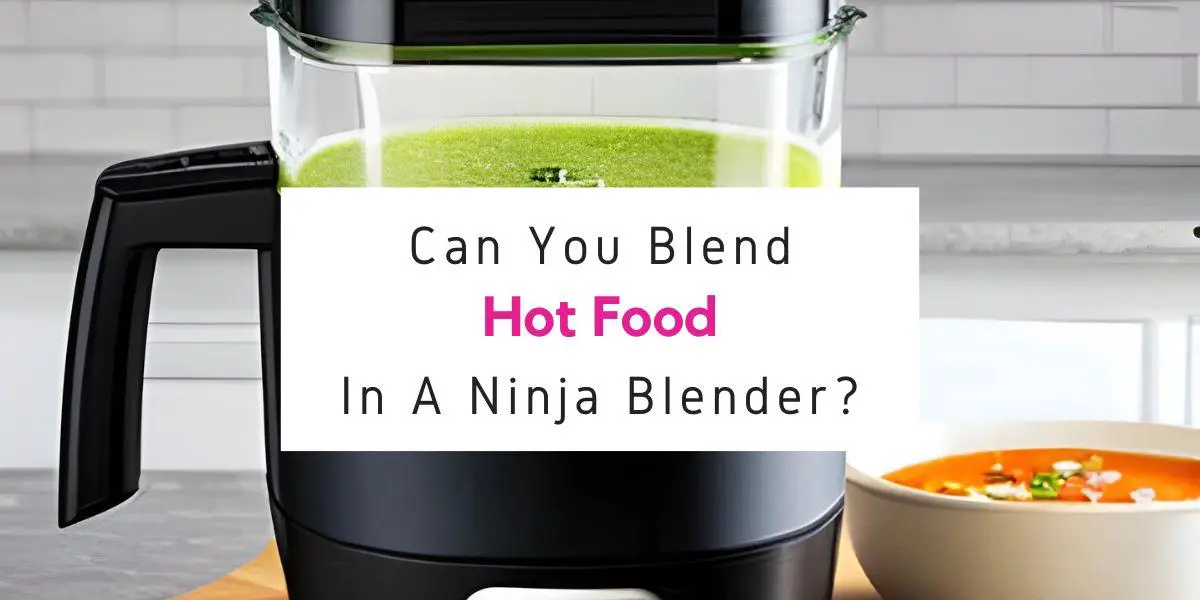
Can You Blend Hot Food In A Ninja Blender?
The answer is yes! Ninja blenders are designed to handle blending hot ingredients, so you can definitely use one to make a hot soup or sauce. Just be careful not to put too much hot food in at once, or it could splash out and burn you. Also, make sure to let the hot food cool down a bit before blending, so your Ninja doesn’t overheat.
So if you’re looking for a powerful blender that can handle hot ingredients, a Ninja is a great option. Just be careful and use common sense when blending hot food, and you’ll be fine.
What Is The Maximum Temperature That A Ninja Blender Can Handle?
Ninja blenders are typically designed to handle temperatures up to around 180 degrees Fahrenheit (82 degrees Celsius). This is the temperature range for many models that are intended for blending hot liquids and making soups directly in the blender.
However, it’s important to note that the exact maximum temperature may vary depending on the specific model of the Ninja blender you have. Always refer to the user manual that came with your blender for accurate information regarding the maximum temperature it can safely handle.
Additionally, while many Ninja blenders are equipped to handle hot liquids, it’s still crucial to follow the manufacturer’s guidelines and safety recommendations when blending hot ingredients to prevent any damage to the blender or accidents. If you’re unsure about the temperature limits of your Ninja blender, it’s best to contact the manufacturer’s customer support for clarification.
How To Safely Blend Hot Food In A Ninja Blender
Blending hot food in a Ninja blender can be convenient, but it’s important to follow some safety guidelines to prevent accidents and ensure the longevity of your blender. Here’s how you can safely blend hot food in a Ninja blender:
- Allow the Food to Cool Slightly: Before blending, let the hot food cool down for a few minutes. This will help reduce the steam pressure inside the blender and prevent splattering.
- Release Steam: When blending hot ingredients, steam can build up inside the blender, potentially causing the lid to pop off or splattering hot liquid. To avoid this, make sure your Ninja blender has a steam release vent in the lid. If it does, open the vent or remove the center cap (if applicable) to allow steam to escape while blending. If your blender doesn’t have a vent, be cautious when opening the lid after blending to release any built-up pressure slowly.
- Use Short Blending Intervals: To prevent overheating of the blender’s motor, blend the hot ingredients in short intervals, typically 20-30 seconds at a time. Allow the motor to rest for a few seconds between each blending cycle. This will prevent the motor from getting overheated and extend the life of your blender.
- Use the Right Speed Setting: Many Ninja blenders have different speed settings. Start with a lower speed setting to begin blending and gradually increase the speed if needed. Higher speeds can create more friction, which could potentially lead to overheating or splattering.
- Blend in Batches: If you’re blending a large amount of hot food, it’s often better to blend in smaller batches. This not only makes blending more efficient but also reduces the strain on the blender’s motor.
- Hold the Lid Securely: Make sure the blender’s lid is securely fastened before blending. Holding the lid down with a firm grip while blending will prevent any accidental splatters or spills.
- Use a Towel or Cloth: To be extra cautious, you can place a folded towel or cloth over the lid while blending. This can help contain any potential splatters and prevent burns.
- Ventilate the Lid: If your Ninja blender has a detachable center cap on the lid, you can partially remove it to create a vent for steam to escape while blending. This can help prevent pressure buildup.
- Avoid Overfilling: Don’t overfill the blender container with hot ingredients. Leave some space at the top to allow for expansion and to prevent the hot liquid from splattering out during blending.
- Blend Smooth Liquids First: If you’re blending soups or other liquid-based hot foods, it’s often best to start with smooth liquids before adding solid ingredients. This will help create a smoother blending process and reduce the risk of splattering.
By following these safety tips, you can successfully blend hot food in your Ninja blender without any accidents or issues. Always prioritize your safety and take necessary precautions to prevent burns or damage to your blender.
Which Is The Best Ninja Blender For Blending Hot Food?
If you’re looking for a Ninja blender that’s specifically designed for blending hot food, the Ninja Foodi Hot And Cold Blender is a great option. This blender comes with a special pitcher that’s specifically designed for blending hot ingredients, so you can be sure that it won’t overheat.
It also has a powerful motor that can handle any type of ingredient, so you can blend up even the thickest soups and sauces without any problems. And if you need to make a cold drink, this blender can do that too!
So if you’re looking for a versatile Ninja blender that can handle both hot and cold ingredients, the Ninja Foodi Hot And Cold Blender is definitely the way to go.
Can A Ninja Blender Make Hot Soup From Cold Ingredients?
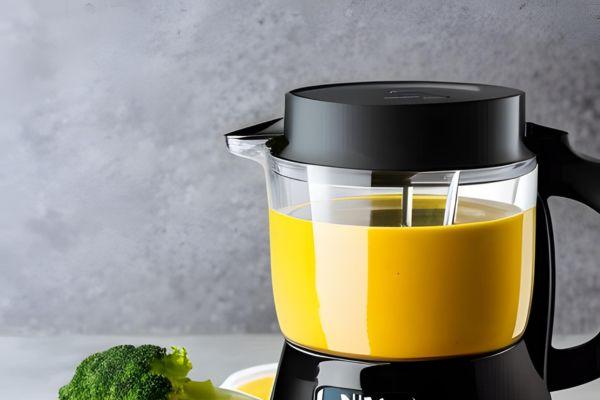
Yes, some Ninja blenders, including the Ninja Foodi Hot and Cold Blender, have the capability to not only blend cold ingredients but also heat them to make hot soup. The Ninja Foodi Hot and Cold Blender is designed with specific settings to facilitate both blending and heating, making it a versatile kitchen appliance.
The Ninja Foodi Hot and Cold Blender typically comes with a “Soup” setting or mode that allows you to blend and heat cold ingredients to make hot soup directly in the blender. Here’s how you might use the Soup setting on this type of blender:
- Add Ingredients: Place your cold soup ingredients into the blender jar. This can include vegetables, broth, seasonings, and any other components of your soup.
- Select the Soup Setting: On the control panel of the Ninja Foodi Hot and Cold Blender, locate and select the “Soup” setting. This setting is designed to blend and heat the ingredients simultaneously.
- Adjust Settings: Depending on the model of the blender, you might have options to adjust the blending time, temperature, and speed. Follow the instructions in the user manual to set the desired parameters for your soup.
- Start the Blender: Once you’ve adjusted the settings to your liking, start the blender by pressing the appropriate button or setting. The blender will begin to blend and heat the ingredients.
- Monitor the Process: Keep an eye on the blending and heating process. The blender will gradually increase the temperature of the ingredients to create hot soup.
- Wait for Completion: Once the blending and heating process is complete, the blender will automatically stop. At this point, your hot soup should be ready to enjoy.
- Serve and Enjoy: Carefully pour the hot soup into bowls and serve it immediately. Be cautious when handling the hot soup and the blender jar, as they will be hot.
Always follow the manufacturer’s instructions and guidelines provided in the user manual when using your specific Ninja Foodi Hot and Cold Blender model. This will ensure that you’re using the appliance safely and effectively to make hot soup from cold ingredients.
Can Most Blenders Process Hot Food Or Is It Only Ninja Blenders?
Many modern blenders are designed to process hot food, not just Ninja blenders. However, the ability to blend hot ingredients can vary based on the design, materials, and features of the blender. Here’s a general overview:
- High-Performance Blenders: High-performance blenders, like Ninja blenders, Vitamix, and Blendtec, are often equipped to handle hot ingredients. These blenders are designed with powerful motors, durable materials, and special venting systems that allow them to process hot liquids, such as making soups or sauces.
- Regular Blenders: Some regular blenders can also process hot foods to some extent, especially if they are made with heat-resistant materials. However, not all regular blenders are designed for this purpose, and using hot ingredients in a blender not specifically designed for it can lead to damage, leaks, or splatters.
- Immersion Blenders: Immersion blenders (also known as hand blenders or stick blenders) are often used to blend hot soups directly in the cooking pot. They are designed to handle hot liquids without the risk of splattering, as they are submerged directly into the food.
- Safety Precautions: Regardless of the blender type, it’s essential to follow safety precautions when blending hot ingredients. This includes allowing the ingredients to cool slightly, using a vented lid if available, blending in short pulses, and avoiding overfilling the blender.
- Blender-Specific Features: Some blenders have specific features or settings for processing hot ingredients, like the “Soup” setting on certain Ninja blenders. These settings usually combine blending and heating to create hot soups directly in the blender.
Before blending hot ingredients in any blender, it’s crucial to check the user manual provided by the manufacturer to understand its specific capabilities and limitations. If you’re unsure about whether your blender can handle hot food, it’s recommended to reach out to the manufacturer’s customer support for clarification.
What Ingredients Shouldn’t Be Blended When They’re Still Hot?
There are certain ingredients that you should avoid blending when they’re still hot in order to prevent accidents, damage to the blender, or undesirable outcomes. Here are some ingredients that are generally not suitable for blending while hot:
- Boiling Liquids: Blending liquids that are at a boiling temperature can cause pressure buildup inside the blender and lead to splattering. Allow hot liquids to cool down before blending.
- Hot Oils or Fats: Hot oils or fats can spatter and create a mess when blended. They can also lead to a risk of burns if they come into contact with skin. It’s best to let oils or fats cool down before blending.
- Highly Carbonated Beverages: Carbonated beverages like soda can release gas and pressure when blended, which could lead to an overflow or splattering. Allow these beverages to go flat before blending.
- Hot Foods with Hard Components: If you’re blending hot foods that contain hard components like bones or large seeds, it’s best to remove those components first. Blending them could damage the blender’s blades or jar.
- Starchy Foods: Starchy foods like potatoes or rice can become sticky when blended hot, leading to a gummy texture that’s less appetizing.
- Eggs: Blending hot eggs can cause them to cook further and create an undesirable texture. Allow eggs to cool before blending, or add them to a sauce or mixture at a lower temperature.
- Gelatin or Jellies: These substances can become too thick when blended hot, leading to uneven blending or a gel-like texture.
- Hot Liquids in Sealed Containers: Avoid blending hot liquids in sealed containers, as the pressure buildup could cause the container to burst.
- Foods That Release Steam: Ingredients that release a lot of steam when blended, such as hot soups, can cause pressure to build up in the blender. Ensure that your blender has proper steam release mechanisms.
- Overfilled Blenders: Overfilling the blender with hot ingredients can cause spills or splatters during blending. Leave some space at the top of the jar to allow for expansion.
When blending hot ingredients, always exercise caution, follow manufacturer’s guidelines, and use appropriate safety measures such as opening steam vents and using a towel over the lid. It’s also a good practice to consult your blender’s user manual to understand its specific recommendations for blending hot foods.
Ninja Foodi Hot And Cold Blender Recipes
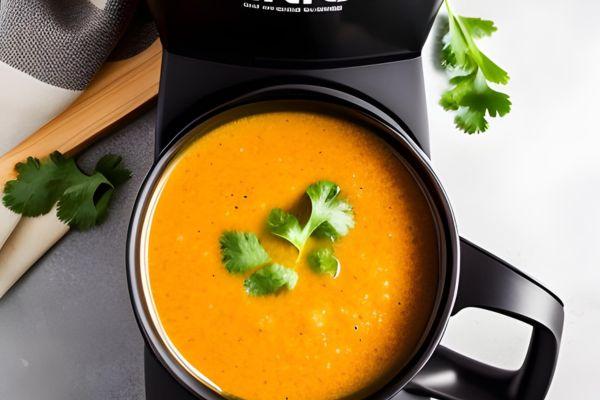
The Ninja Foodi Hot and Cold Blender is a versatile appliance that can be used to create a wide range of recipes, from smoothies and frozen treats to hot soups and sauces. Here are a few recipe ideas that you can try with your Ninja Foodi Hot and Cold Blender:
- Creamy Tomato Basil Soup
- Ingredients: Tomatoes, basil leaves, onion, garlic, vegetable broth, heavy cream, salt, pepper.
- Instructions: Blend the tomatoes, basil, onion, and garlic on the “Soup” setting until smooth. Then, add the vegetable broth, heavy cream, salt, and pepper. Blend again until well combined. Heat on the “Soup” setting until hot and serve.
- Green Smoothie
- Ingredients: Spinach, kale, banana, pineapple chunks, Greek yogurt, almond milk, chia seeds.
- Instructions: Blend the spinach, kale, banana, pineapple, Greek yogurt, almond milk, and chia seeds on the appropriate setting until smooth. Adjust the consistency by adding more liquid if needed.
- Mango Sorbet
- Ingredients: Frozen mango chunks, lime juice, honey or agave syrup.
- Instructions: Blend the frozen mango chunks and lime juice on the “Frozen Treats” setting until smooth and creamy. Add honey or agave syrup to taste. Enjoy the sorbet immediately or freeze for a firmer texture.
- Peanut Butter Banana Smoothie
- Ingredients: Banana, peanut butter, oats, Greek yogurt, milk, honey.
- Instructions: Blend the banana, peanut butter, oats, Greek yogurt, milk, and honey on the appropriate setting until well combined and smooth.
- Creamy Avocado Pasta Sauce
- Ingredients: Avocado, fresh basil, lemon juice, garlic, olive oil, salt, pepper.
- Instructions: Blend the avocado, basil, lemon juice, garlic, olive oil, salt, and pepper until creamy and well mixed. Use this sauce to toss with cooked pasta for a creamy and flavorful dish.
- Iced Coffee Frappe
- Ingredients: Brewed coffee, milk, sugar, ice cubes.
- Instructions: Blend the brewed coffee, milk, sugar, and ice cubes on the “Frozen Treats” setting until well blended and frothy.
- Chunky Salsa
- Ingredients: Tomatoes, red onion, jalapeno, cilantro, lime juice, salt.
- Instructions: Blend the tomatoes, red onion, jalapeno, cilantro, lime juice, and salt on a medium setting for a chunky salsa.
Remember to follow the specific instructions provided in your Ninja Foodi Hot and Cold Blender’s user manual for the best results. Feel free to experiment with different ingredients and variations to create delicious recipes tailored to your taste preferences.
FAQ’s About Blending Hot Food In Ninja Blender
Can I blend hot liquids in my Ninja blender?
Yes, many Ninja blenders are designed to handle hot liquids. However, it’s important to follow safety guidelines and use the appropriate settings to prevent accidents and splattering.
What’s the maximum temperature my Ninja blender can handle?
Ninja blenders can typically handle temperatures up to around 180 degrees Fahrenheit (82 degrees Celsius), but this can vary based on the model. Refer to your blender’s user manual for specific temperature limitations.
Is there a special setting for blending hot food in a Ninja blender?
Some Ninja blenders have a “Soup” setting specifically designed for blending and heating hot ingredients. This setting combines blending and heating to create hot soups and sauces directly in the blender.
Do I need to let hot ingredients cool before blending?
Yes, it’s advisable to let hot ingredients cool slightly before blending. This reduces pressure buildup and prevents steam-related issues.
Should I open the steam vent while blending hot ingredients?
Yes, if your Ninja blender has a steam vent in the lid, make sure it’s open or partially open to allow steam to escape. This prevents pressure buildup and potential splattering.
Can I blend oils or fats that are hot?
It’s best to avoid blending hot oils or fats, as they can spatter and lead to a messy situation. Let them cool before blending.
Can I blend hot soups directly in the Ninja blender?
Yes, you can blend hot soups directly in a Ninja blender. Use caution, follow safety tips, and consider using the “Soup” setting if available.
Is it safe to use my Ninja blender to blend hot ingredients regularly?
Ninja blenders designed for blending hot ingredients can handle occasional blending of hot foods. However, frequent blending of hot ingredients may wear down the blender over time. Refer to your user manual for guidelines.
Can I use my Ninja blender to make hot beverages like coffee or hot chocolate?
Yes, many Ninja blenders can handle hot beverages like coffee or hot chocolate. However, avoid using highly carbonated or boiling liquids, and follow safety precautions.
What if my Ninja blender doesn’t have a “Soup” setting?
If your blender doesn’t have a dedicated “Soup” setting, you can still blend hot ingredients using lower speed settings, short pulses, and by allowing steam to escape safely.
Remember that safety is paramount when blending hot foods. Always consult your blender’s user manual for specific instructions and follow safety tips to prevent accidents and ensure the longevity of your blender.
Final Verdict – Can You Blend Hot Food In A Ninja Blender?
The answer is yes, you can blend hot food in a Ninja blender. However, there are a few things to keep in mind.
First, make sure that the ingredients are not too hot. If they are, they can cause the Ninja to overheat and shut off.
Second, add liquid to the blender along with the hot ingredients. This will help to prevent the food from sticking to the sides of the blender and making it difficult to blend.
Finally, start with a lower setting and gradually increase the speed as needed.
By following these simple tips, you can safely and easily blend hot food in your Ninja blender.


